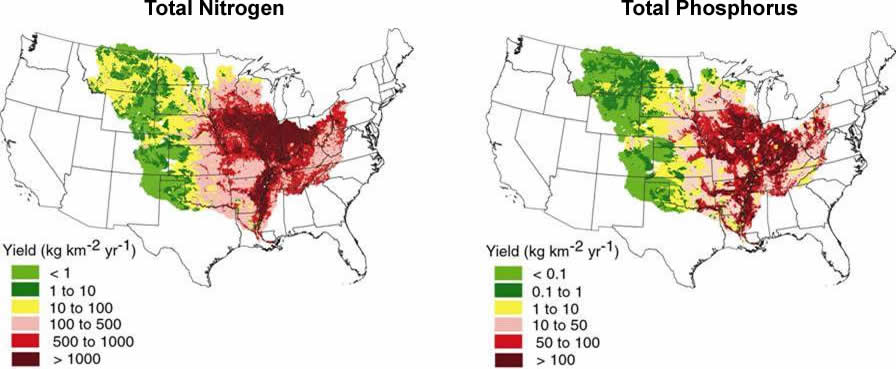National Water-Quality Assessment (NAWQA) Project
Back to Article Information || Previous Figure ||Next Figure >>

Delivery of nutrients to the Gulf is highest from watersheds in the central and eastern portions of the Mississippi River Basin that are drained by large, fast flowing rivers with relatively little natural removal of nutrients. These watersheds receive nutrient contributions from agricultural lands and large cities, including those that border large rivers, which enhance nutrient transport to the Gulf. Watersheds in the western Basin contribute relatively small quantities of nutrients to the Gulf, owing to low precipitation and streamflow and large natural removal of nutrients in streams and rivers.
Reservoirs, particularly common along the Tennessee and Missouri Rivers, naturally remove more phosphorus than nitrogen, leading to large reductions in the amounts of phosphorus that reach the Gulf. While these findings indicate that phosphorus inputs upstream of reservoirs may have limited impact on Gulf hypoxia, these inputs are known to create water-quality issues in the reservoirs themselves.
USGS results suggest that nutrient reductions in the Gulf may be more efficiently achieved by focusing nutrient strategies in watersheds drained by large rivers and areas downstream of reservoirs. Nutrient delivery to the Gulf is reported as the nutrient “yield” in the maps; this is the mass of nutrient delivered to the Gulf per unit of watershed area per time (units = kilograms per square kilometer per year).